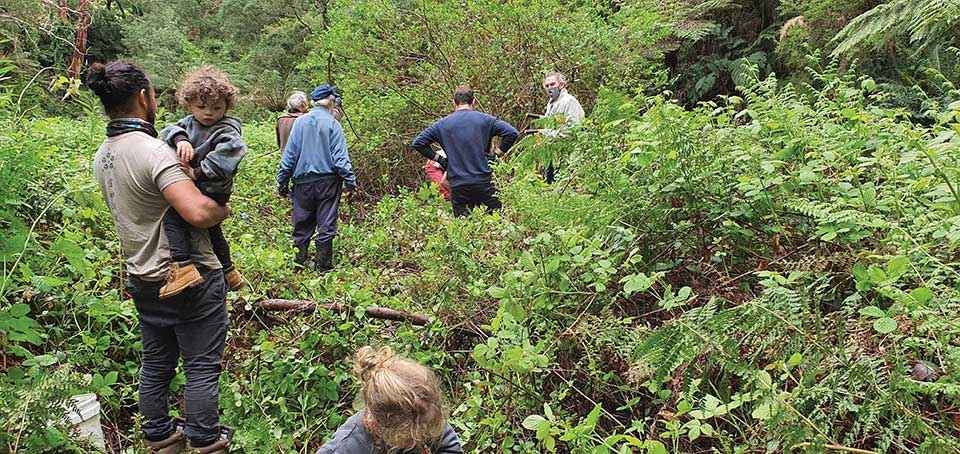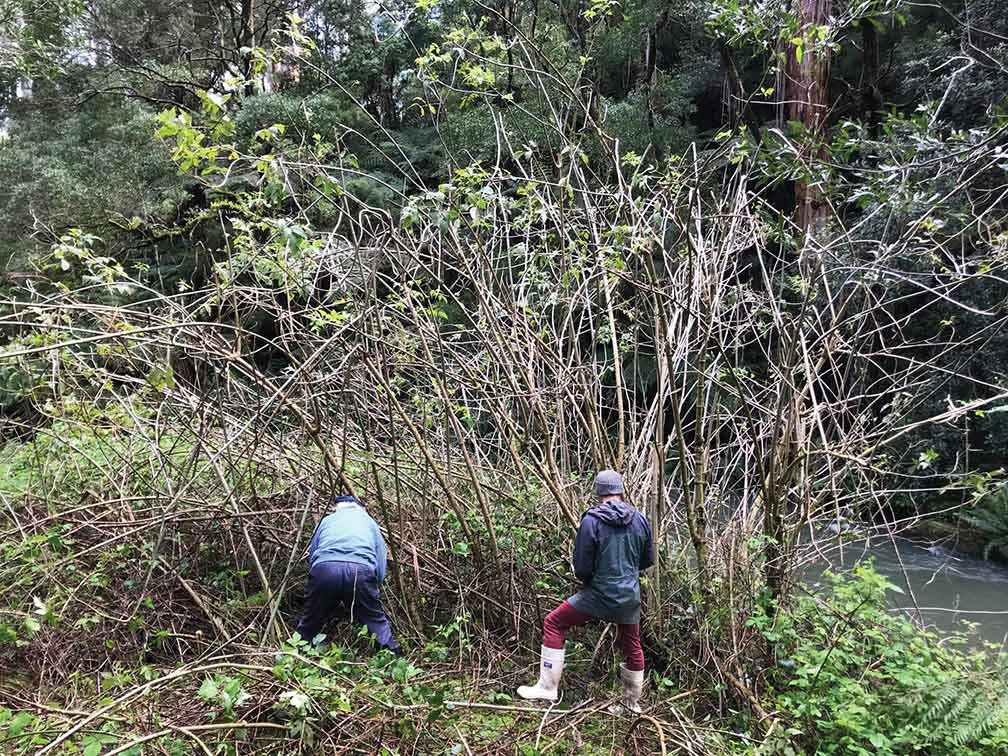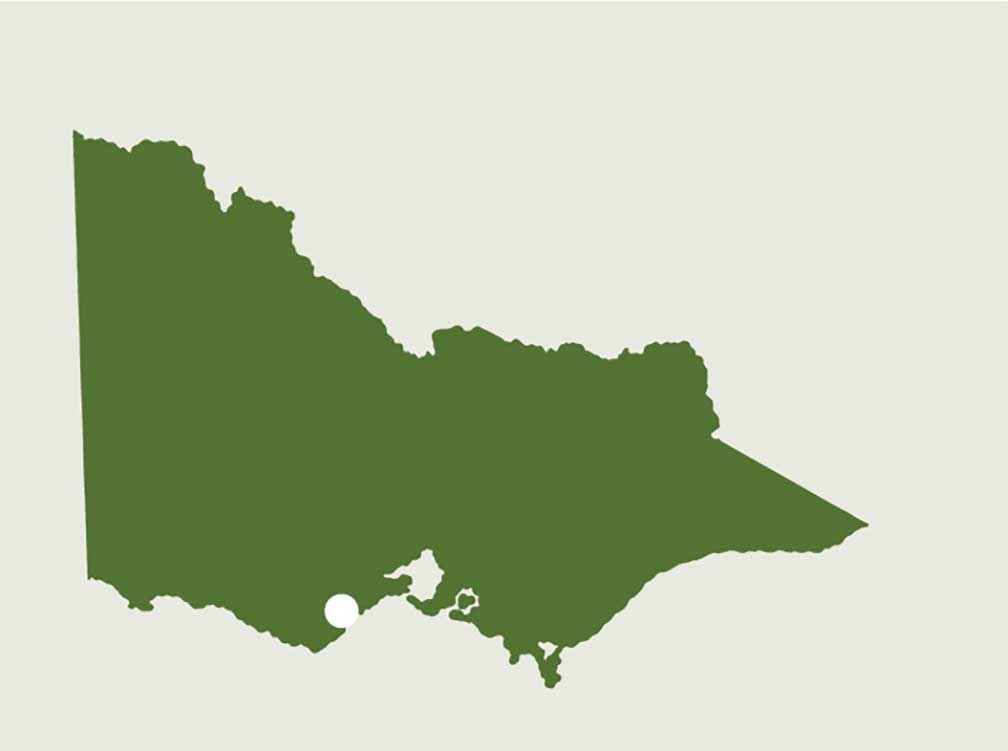Victorian Landcare Magazine - Winter 2021, Issue 81

Weeds are a huge and often demoralising problem in the southern Otways. Plants like blackberry are common across the landscape and seem to recolonise as quickly as you remove them. Eradication can seem like an impossible dream.
The Southern Otway Landcare Network (SOLN), along with its partner organisations, has decided to prioritise emerging weeds. By implementing targeted and comprehensive control, we hope to be able to remove new weed species before they become widespread. This benefits the environment, is an efficient use of resources and provides some positive results for our members.
Along the eastern branch of the Barham River tree dahlia (Dahlia imperialis) has escaped from gardens and is rapidly spreading along the course of the river. Tree dahlia is a fast growing perennial from South America. It grows up to five metres high with thick bamboo-like canes and has large purple flowers. Tree dahlia grows quickly in riparian areas, choking out native species and altering the hydrology and natural ecosystem of the river.
Late last year, while cycling home after work, I got chatting with a local landholder who was concerned about the spread of weeds. According to Greg Ware, the tree dahlia had spread more than a kilometre in the past five years. I suggested a monthly working bee and Greg jumped at the idea.
Our first working bee, in conjunction with the Otway Barham Landcare Group (OBLG), was on Greg’s property on the Barham River near Apollo Bay, where we trialled cutting the tree dahlia, pasting the cut ends with herbicide, and stacking the branches on a large blackberry patch. Removing the branches was critical as tree dahlias send down roots and re-sprout from fallen branches. Recent heavy rains meant the river had swollen so we were not able to access as many of the clumps as we had hoped, but we removed three infestations on the near bank and got the ball rolling.

Above: This fallen log was discovered under a large clump of tree dahlia. Thanks to the Leopold Football Club for their help in rescuing it.
Greg’s family organised a barbecue and provided fresh scones with homemade blackberry jam. The working bee was a great social occasion for the 14 people who attended (including children and babies) as we were just coming out of lockdown restrictions.
At the next working bee, we targeted an upstream infestation and approached another landholder who has happy to be involved.
This has been a highly successful venture for SOLN and OBLG. We have engaged new members and built an increased awareness in the community around emerging weeds. SOLN and the OBLG are now applying for a grant to extend their tree dahlia control project. The battle has only just begun, but with the potential to remove a damaging weed permanently from our environment, it is well worth the fight.
Oliver Kerr is a project coordinator with SOLN.
For more information email oliver.landcare@soln.org

Above: Location map - southern Otways